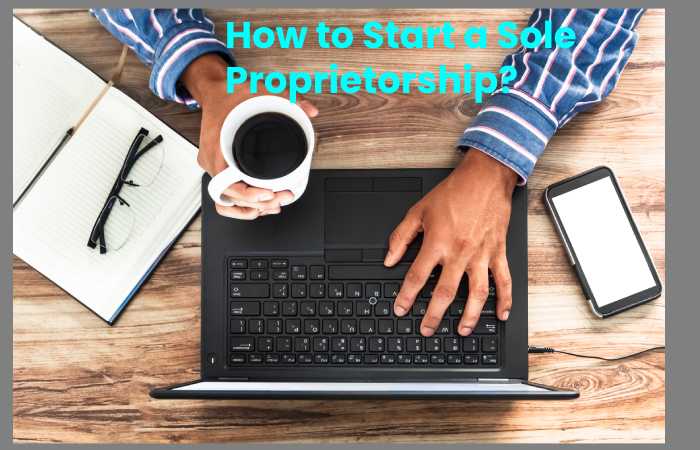Table of Contents
What is a Sole Proprietorship?
The sole proprietorship is a business owned by a single person. Unlike partnerships and other more complex business structures (corporations and LLCs), it does not have to register with the state to exist. If you are the sole owner of a business, you automatically have sole proprietorship simply by doing business.
Sole Proprietorship: Advantages
Sole proprietorships are the most common method to structure a business because they have many advantages.
First, it is the easiest way to get started, as most states do not require sole proprietorships to register with the Secretary of State.
Also, there are fewer regulations when forming a board of directors (since you are alone) and organizing meetings.
Another clear advantage is that you don’t have to answer to anyone but yourself, and you can set your hours and work routine.
Lastly, you don’t have to share your earnings with anyone (unless you hire employees).
Sole Proprietorship: Disadvantages
It sounds perfect, but having a sole proprietorship also has problems.
The critical problem with sole proprietorships is that the owner’s finances are tied to the business. It means that if the company goes bankrupt, so does the owner. Therefore, forming a sole proprietorship is riskier.
The same thing happens if the company sues: the lawsuit is against you (meaning that you are responsible for all the costs associated with the litigation).
On the other hand, they must pay both income taxes and self-employment taxes (from Social Security and Medicare). So as the company generates more profit, it will also have to pay more taxes.
Characteristics of Small Businesses Declared as a Sole Proprietorship
Generally, sole proprietorships form by small companies that do not want to comply with legal complications and spend more time complying with them instead of setting up their businesses.
However, for a small business to become a sole proprietorship, there are specific criteria that it must meet.
The business must have a low risk of business and personal liability, loss, lawsuits, and bankruptcy.
The profit increase formulated for the SMBE should be slight with an amount that can quickly obtain within the stipulated period.
The customers targeted by the small-scale business should be within a small radius, such as locals, families, friends, and others.
Small businesses usually start with their hobbies, as the business model is suitable for obtaining sole proprietor permits.
How to Start a Sole Proprietorship?

You may need a federal or state business license to operate when you choose to start a business. You can search for these licenses in the Cal Gold database, which guides you by business type. In California, for example, all companies must have a general business license from the city. In addition, the database includes national, local, and regional grants, including commercial license applications. The next step is to obtain an employee identification number.
An individual, not a couple, usually owns a sole proprietorship. This type of business is inexpensive and has no special reporting requirements. Its primary disadvantage is that the owners are personally liable for all debts and taxes incurred by the company. It’s a downside, but the pros outweigh the cons. A sole proprietorship is an ideal option for those who are starting a small business and don’t want to worry about managing a complex business structure.
Another essential consideration is ensuring your business. As the sole proprietor, you are personally liable for any debt or work injury, so you must obtain the appropriate insurance. In addition, if you plan to drive your vehicle to meet clients, make sure your auto insurance covers business-related activities.
Payments to the Company
Payments to the company are also made in the owner’s name, even if they use a trading name to conduct business.
In the meantime, the sole proprietorship is indistinguishable from the owner; taxes remain a simple matter. Any income from the exclusive proprietor tax as the owner’s profit, with the pay and losses filed using Schedule C and a Standard Form 1040. Gains and losses calculates on Schedule C and then transferred to Form 1040 as regular earnings. It can be attractive as any losses incurred by the company can use to offset income from other sources.
One drawback to a sole proprietorship is the owner’s need to file a Schedule SE, which calculates the amount of self-employment tax due. The owner does not need to pay the unemployment tax himself but is responsible for the 15% social security tax on the gross earnings. In an old employment scenario, an employee pays only half of the social security requirement, so this may surprise some new sole proprietors.
Another and potentially most significant disadvantage of being a sole proprietor is that the business owner is personally liable for any debts the business incurs. It could be quite a concern if an owner took out a loan and later owned the business. The dissolution of the company will not mean the end of the debt.
Conclusion
A sole proprietorship is a business structure for one owner. The management structure is similar to a single-member LLC. However, the owner has every right to make decisions for a sole proprietorship. If you’re about to start a sole proprietorship, check out this article.
Read Also: Why Should I Brush the Tongue?

